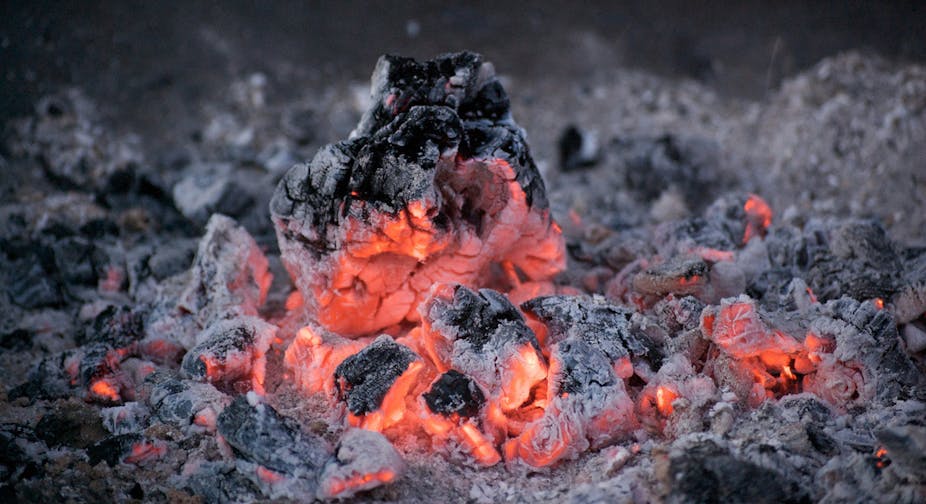Kenyans pay high prices for electricity up to USD$0.19/kWh for residential customers compared to about US$0.10 in South Africa which is a barrier to the country’s sustainable economic development. The country is also expecting a steep rise in demand.
To address this Kenya is modernising its electricity system and shifting away from costly diesel generators. Investments in new infrastructure are being made to lower prices. New projects are moving forward such as geothermal, natural gas, wind – such as the Lake Turkana Wind Farm, and a solar photovoltaic (PV) project in the northeastern city of Garissa.
But the most ambitious, and most controversial, is a coal-fired power plant proposed for the seaside town of Lamu – a Unesco World Heritage site.
Electricity from the Lamu project is expected to have a much lower market price than current prices, selling for about US$0.08/kWh. But this doesn’t include the costs of pollution, including greenhouse gases like carbon dioxide (CO2). When these are factored in, the full price of coal-fired electricity is much less attractive.
Also, although Kenya has recently identified domestic coal deposits, there is no infrastructure in place to deliver coal to the proposed facility at Lamu. The coal would be imported from South Africa until a 350km rail line is constructed from coal-producing Kitui County to Lamu.
The timeline for such a railway is uncertain and may take five to ten years to build. The power plant will consume about 3.6 million tonnes of coal annually at an expected price of US$50/ton. The total cost of importing coal for this one facility, about $180 million each year. Kenya already has a significant trade deficit and, unless the Lamu plant significantly displaces diesel imports, coal imports could exacerbate it.
Social cost of carbon
According to the project’s environmental and social impact assessment, the Lamu facility will produce about 8.8 million megawatt-hours (MWh) of electricity each year. The assessment also states that each MWh of electricity from this type of plant results in one ton of carbon dioxide – making a total of 8.8 million tonnes of CO2 per year.
Environmental economists have estimated the economic value of the damage caused to human health and the environment from climate change – known as the “social cost of carbon”.
Using the same methodology as these calculations, adding the social cost of carbon (USD$0.05/kWh in 2017 dollars) to the proposed coal plant’s market price (USD$0.08/kWh) results in a total cost of $0.13/kWh in coal-fired electricity production. The total cost to society of coal-fired electricity from the Lamu facility is therefore at least 40% higher than the market price which ignores the human health and environmental effects of pollution.
Lower cost options
That’s the bad news. The good news is there are lower cost options for Kenya to meet its electricity goals.
The price of renewable energy is now competitive with fossil fuels. Electricity from the 50 MW solar PV project in Garissa is priced at US$0.12/kWh. The feed-in tariff for geothermal projects is US$0.09/kWh and the 310 MW Lake Turkana Wind project is priced at just US$0.08/kWh – just a fraction of a cent above the price of coal-fired electricity and much less of the coal’s total cost when pollution is included.
These technologies are pollution-free and do not depend on fuel imports. Although wind and solar are intermittent resources and more difficult to integrate into the grid, geothermal provides baseload power – a more reliable energy source that isn’t affected by factors like weather conditions. Advances in energy storage are also making higher penetrations of solar and wind more feasible.
The outlook for solar PV is even more encouraging. In recent months, India has cancelled the construction of coal power projects – the equivalent of 14 Lamu projects – because the price of solar PV has dropped precipitously. The most recent in a string of record-breaking solar projects was a 500 MW priced at 2.44 rupees per kWh, or USD$0.038/kWh. That price is nearly half that of the Lamu coal plant ignoring the cost of pollution. It seems reasonable to expect declines in Kenya’s solar prices, even if less dramatic than those in India.
The combination of increasing global concern of climate change and the dropping costs of zero-carbon energy technologies presents a risk that the Lamu coal plant could become a stranded asset.
An OECD working paper notes that
energy-using equipment in electricity and other economic activities will have to be retired at an accelerated pace to make space for less carbon intensive technologies and practices. As climate policies drive this transition, some assets will become ‘stranded’ – ie. unable to recover their investment cost as intended, with a loss of value for investors.
The Lamu plant has a design life of at least 30 years. There is a risk that the Lamu coal plant could become a financial liability sooner than 2050, perhaps much sooner.
Coal-fired electricity was the engine of economic growth in the 20th century, but for a variety of reasons, it’s unlikely to power the 21st. Kenya has abundant solar, geothermal, and other energy resources that, thanks to technological and financial innovations, are now cheaper than coal.
The climate change costs of coal will only increase in the coming years while innovation is driving the price of renewables down. Compared to coal, renewable energy sources such as solar, geothermal, and wind, have lower total costs, less long-term risk, and greater potential to power Kenya’s sustainable economic development.

